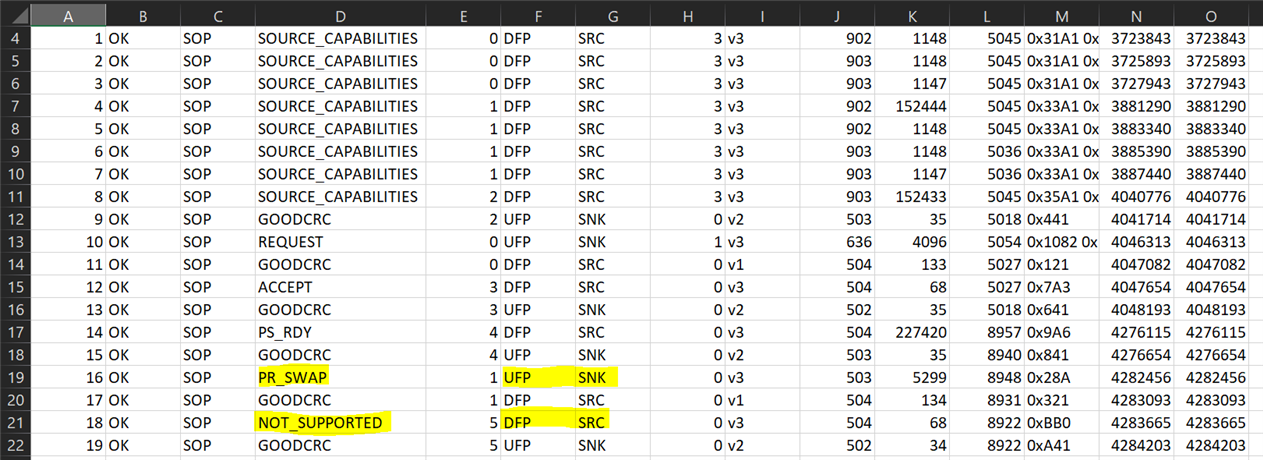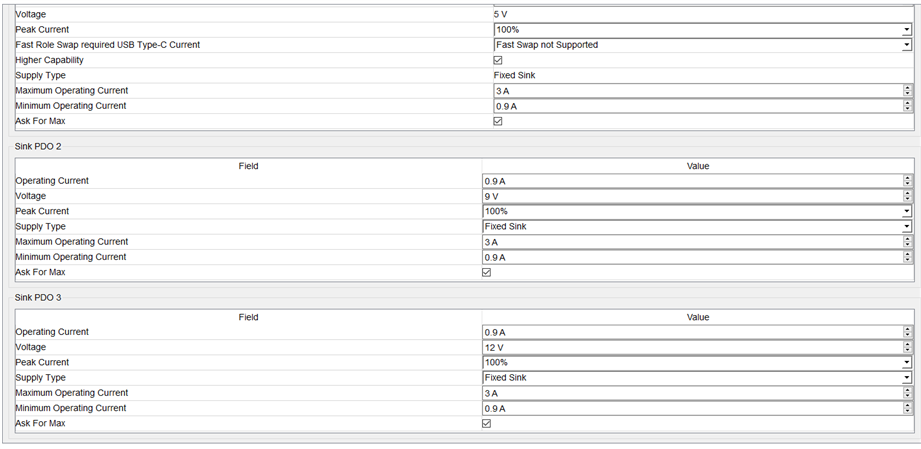Part Number: TPS65987EVM
Hi,
I want to use the TPS65987EVM to test a USB PD configuration that is needed in our HW development.
The EVM is connected (permanent mechanical connection) via USB-C to a USB PD DRP Data Host.
The EVM must be allways a Data Device.
Now I want to switch the EVM (as fast as possible) between DFP and UFP and vice versa.
This transition should be triggered either over a GPIO (H -> DFP, L -> UFP) of the TPS6598 ore the presence of the 20V ext. power supply of the EVM (ext. PS presence -> DFP; ext. PS not presence -> UFP)
For my use case it is very important that especially the transition between DFP to UFP is as fast as possible.
I'm using the Application Customization Tool, so either you can give me a ready configured project for the EVM.
Or it would be great if you can give me the knowledge do configure the EVM to perform the wanted behavior.
Thanks in advance Klaus





